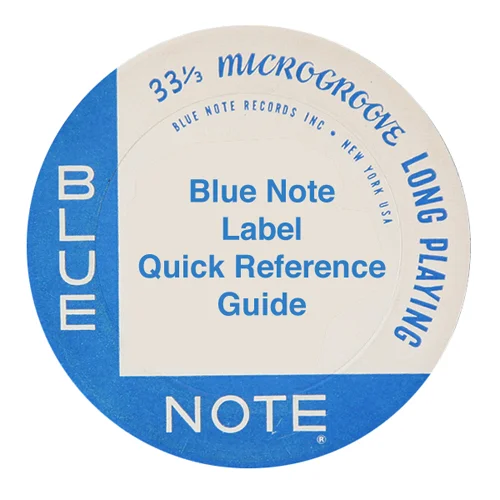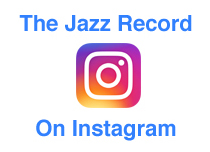The Cool Meets The Classical: Miles Davis - "Miles Ahead"
/Miles Davis • Miles Ahead • 1957 • Columbia Records
Recorded May 1957 at Columbia 30th Street Studios, NYC
The Selection:
The Tracks:
A1. Springsville
A2. The Maids Of Cadiz
A3. The Duke
A4. My Ship
A5. Miles Ahead
B1. Blues For Pablo
B2. New Rhumba
B3. The Meaning Of The Blues
B4. Lament
B5. I Don't Wanna Be Kissed
The Players:
Miles Davis - Flugelhorn
Gil Evans - Arranger, Conductor
Johnny Carisi - Trumpet
Bernie Glow - Trumpet
Taft Jordan - Trumpet
Louis Mucci - Trumpet
Ernie Royal - Trumpet
Lee Konitz - Alto Saxophone
Joe Bennett - Trombone
Jimmy Cleveland - Trombone
Frank Rehak - Trombone
Tom Mitchell - Bass Trombone
Edwin Caine - Flute, Clarinet
Sid Cooper - Flute, Clarinet
Romeo Penque - Flute, Clarinet
Danny Bank - Bass Clarinet
Jim Buffington - French Horn
Tony Miranda - French Horn
Willie Ruff - French Horn
Bill Barber - Tuba
Paul Chambers - Bass
Art Taylor - Drums
The Record:
Miles admiring Gil's Work. © Michael Ochs.
Despite countless hours enjoying and studying the many stages of the storied career of Miles Davis - from The Birth Of The Cool through his first and second great quintets, back to the Blackhawk recordings with Hank Mobley, then on to his groundbreaking Silent Way/Bitches Brew/Jack Johnson/On The Corner period and even a stage where I soaked up the freaky electric sound circuses of albums like Big Fun, Miles Davis In Concert, Agharta and Pangaea - there has always been one period of Davis' that has alluded me, and that is his time spent with Gil Evans in the late 1950s. The concept of an orchestra alongside Miles never did it for me in my younger days, but as I grow older I have come to appreciate this period more than I used to. I haven't yet fully embraced it, but I do find myself understanding the impetus behind the partnership, and when I chanced upon an original pressing of Miles Ahead I jumped at the opportunity to explore it even further.
I'll get my basic problem with the Miles Davis/Gil Evans albums out front right away: it doesn't feel like jazz to me. Yes, Sketches Of Spain is a beautiful album, and both Porgy & Bess and Miles Ahead show off what the academics have termed as the "Third Stream" movement - a successful synthesis between classical music and jazz - but, the end results of these albums don't feel like "modern jazz" to my ears, that inventive and spontaneous conversation between improvising musicians that marks the best of jazz music from it's golden age.
All that said, Miles Ahead is a good listen - especially for fans of Davis - it just isn't the first album I'm bound to reach for when I'm ready for a little bit of The Dark Prince in my life. The album is undoubtedly a success, as we do have the outsized talents of Davis and Evans (who worked together earlier on the legendary The Birth Of The Cool sessions) at a time when both were realizing the heights their talents could take them. Miles sounds fantastic on the flugelhorn, which is not surprising since he was coming off of the creative outburst marked by his time at Prestige with his first great quintet (the albums Workin', Steamin', Relaxin' and Cookin'). Miles is the only "soloist" on Miles Ahead, and while there are no real overpowering or memorable moments, when he does step up to the mic he rides the melodies laid down by the orchestra perfectly. He is still very much in his lyrical "cool" mood, with his flugelhorn dancing and floating through Evan's compositions.
When this album was released Evans was still an obscure figure to jazz audiences, although according to the liner notes he was not only well known to jazz musicians, but highly regarded as well. The notes quote Gerry Mulligan from a 1957 Downbeat interview with Nat Hentoff:
"Not many people really heard Gil; those who did, those who came up through the Claude Thornhill band, were tremendously affected, and they in turn affected others."
Obviously after his time spent with Davis at Columbia, Evans would become a household name in jazz, and while he would go on to make a couple great albums under his own name and produce some fine albums for others, his three Columbia albums with Davis will always remain his greatest jazz legacy.
A Note On The Cover:
Second version of cover, issued early 1960s.
The copy I scored has the original cover artwork, a white woman and child sailing along the water. The image is a decent metaphor for the music contained within, but definitely not a great cover for a MIles Davis record (especially after the classic run of covers for Prestige). It led to the famous quote by Miles to Columbia Records executive George Avakian, "Why'd you put that white bitch on there?" Avakian later said the question was made in jest, and I don't doubt that, but I also don't fault Miles for asking the question, sarcastically or otherwise.
So, what did Columbia do? They replaced the cover with what is, in my opinion, the least visually pleasing of all the album covers in Davis' official discography. It is a drab cover with a generic image of Miles blowing his horn, and to my eyes the way the text is laid out makes for an awkward reading of the title and artist information. Compare it even with the other two Evans/Davis collaborations, Porgy & Bess and Sketches Of Spain, and it's obvious the new artwork was rushed out with no regard for aesthetics. I must have passed over Miles Ahead a hundred times in my early years of digging through the racks, figuring no album with that artwork could possibly be any good.
The Vinyl:
My copy is an original deep groove 6-eye mono pressing with, as noted above, the original cover artwork. I paid a measly $10 for this copy, and while that might seem cheap, the vinyl itself is pretty worn out and therefore I'd say the price is about right. Even after two deep vacuum cleanings there is a still a noticeable amount of surface noise. One unfortunate side effect of how great deep groove recordings sound, is how much wear those grooves can accumulate over a lifetime of abuse. The Columbia 6-eye pressings are highly-regarded, and rightly so, even with the massive groove wear the analog depth can still be heard in all it's glory.
The markings in the vinyl trail-ff are in line with what you'd expect from a late 1950s Columbia release with "XLP41762-1D" and "XLP41762-1C" on Side 1 and 2 respectively. We also have "YHH" on both sides, as well as what appears to be a "4" and "T11" on the Side 2 trail-off.
I'd say that Miles Ahead is certainly deserving of it's status as a "classic" in the discography of MIles Davis if for no other reason that it marks a defined period in the many phased career of the legendary trumpeter. It deserves a listen by any jazz fan, but whether it will become a favorite (or even if it will make it into a heavy rotation) will depend on the listener's personal tastes. I have some friends who are not big jazz fans who claim these Davis/Evans albums are some of their favorite jazz albums, and I can understand how a casual jazz fan would find the atmospherics of these recordings pleasurable. I personally put these on the outskirts of the "modern jazz" world; enjoyable diversions in the history of jazz during it's golden age, but far from the most enjoyable and exciting jazz that was being made at this time, be it by Miles Davis or any of the other myriad of jazz musicians who were feeling the creative freedom that the jazz world supplied to them in the late 1950s and early 1960s.












